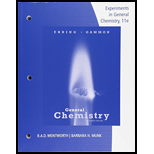
Concept explainers
(a)
Interpretation:
The alcohols present in the given compound has to be stated whether it is primary, secondary or tertiary.
Concept Introduction:
In an organic compound, the reactive portion is known as functional group. This undergoes reactions with other reagents and this does not depend upon how the rest of the compound is like. Few of the common functional groups are alcohol, ester,
In alcohol compound, the functional group is hydroxyl. If the hydroxyl is bonded to a carbon which bears two hydrogen atoms means it is primary alcohol. If the hydroxyl group is bonded to a carbon which bears one hydrogen atom means it is a secondary alcohol and if it is bonded to a carbon atom which does not have any hydrogen atom means it is tertiary alcohol.
(b)
Interpretation:
The alcohols present in the given compound has to be stated whether it is primary, secondary or tertiary.
Concept Introduction:
In an organic compound, the reactive portion is known as functional group. This undergoes reactions with other reagents and this does not depend upon how the rest of the compound is like. Few of the common functional groups are alcohol, ester, carboxylic acid, ketone, aldehyde etc. Functional group determines the nature of the compound.
In alcohol compound, the functional group is hydroxyl. If the hydroxyl is bonded to a carbon which bears two hydrogen atoms means it is primary alcohol. If the hydroxyl group is bonded to a carbon which bears one hydrogen atom means it is a secondary alcohol and if it is bonded to a carbon atom which does not have any hydrogen atom means it is tertiary alcohol.
(c)
Interpretation:
The alcohols present in the given compound has to be stated whether it is primary, secondary or tertiary.
Concept Introduction:
In an organic compound, the reactive portion is known as functional group. This undergoes reactions with other reagents and this does not depend upon how the rest of the compound is like. Few of the common functional groups are alcohol, ester, carboxylic acid, ketone, aldehyde etc. Functional group determines the nature of the compound.
In alcohol compound, the functional group is hydroxyl. If the hydroxyl is bonded to a carbon which bears two hydrogen atoms means it is primary alcohol. If the hydroxyl group is bonded to a carbon which bears one hydrogen atom means it is a secondary alcohol and if it is bonded to a carbon atom which does not have any hydrogen atom means it is tertiary alcohol.
(d)
Interpretation:
The alcohols present in the given compound has to be stated whether it is primary, secondary or tertiary.
Concept Introduction:
In an organic compound, the reactive portion is known as functional group. This undergoes reactions with other reagents and this does not depend upon how the rest of the compound is like. Few of the common functional groups are alcohol, ester, carboxylic acid, ketone, aldehyde etc. Functional group determines the nature of the compound.
In alcohol compound, the functional group is hydroxyl. If the hydroxyl is bonded to a carbon which bears two hydrogen atoms means it is primary alcohol. If the hydroxyl group is bonded to a carbon which bears one hydrogen atom means it is a secondary alcohol and if it is bonded to a carbon atom which does not have any hydrogen atom means it is tertiary alcohol.
To State: Whether the given alcohol is a primary, secondary or tertiary alcohol.
Want to see the full answer?
Check out a sample textbook solution
Chapter 23 Solutions
Lab Manual Experiments in General Chemistry
 Chemistry for Today: General, Organic, and Bioche...ChemistryISBN:9781305960060Author:Spencer L. Seager, Michael R. Slabaugh, Maren S. HansenPublisher:Cengage Learning
Chemistry for Today: General, Organic, and Bioche...ChemistryISBN:9781305960060Author:Spencer L. Seager, Michael R. Slabaugh, Maren S. HansenPublisher:Cengage Learning General, Organic, and Biological ChemistryChemistryISBN:9781285853918Author:H. Stephen StokerPublisher:Cengage Learning
General, Organic, and Biological ChemistryChemistryISBN:9781285853918Author:H. Stephen StokerPublisher:Cengage Learning Organic And Biological ChemistryChemistryISBN:9781305081079Author:STOKER, H. Stephen (howard Stephen)Publisher:Cengage Learning,
Organic And Biological ChemistryChemistryISBN:9781305081079Author:STOKER, H. Stephen (howard Stephen)Publisher:Cengage Learning, Introductory Chemistry: A FoundationChemistryISBN:9781337399425Author:Steven S. Zumdahl, Donald J. DeCostePublisher:Cengage Learning
Introductory Chemistry: A FoundationChemistryISBN:9781337399425Author:Steven S. Zumdahl, Donald J. DeCostePublisher:Cengage Learning Chemistry: An Atoms First ApproachChemistryISBN:9781305079243Author:Steven S. Zumdahl, Susan A. ZumdahlPublisher:Cengage Learning
Chemistry: An Atoms First ApproachChemistryISBN:9781305079243Author:Steven S. Zumdahl, Susan A. ZumdahlPublisher:Cengage Learning ChemistryChemistryISBN:9781305957404Author:Steven S. Zumdahl, Susan A. Zumdahl, Donald J. DeCostePublisher:Cengage Learning
ChemistryChemistryISBN:9781305957404Author:Steven S. Zumdahl, Susan A. Zumdahl, Donald J. DeCostePublisher:Cengage Learning





